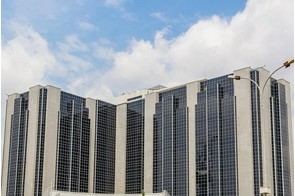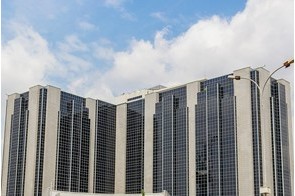Latest News
Sub-Saharan Africa’s recovery from FX scarcity to take time – Moody’s

News Highlight
Moody’s said banks in Nigeria, Angola, and DRC remain the most affected by FX shortages due to their economies’ high reliance on dollars.
Moody’s Investors Service released a new report today, stating that it will take time before Sub-Saharan African governments, banks, and non-financial companies overcome foreign currency shortages prevalent in their economies.
In the report, titled “Foreign-currency Shortages Are Subsiding But Will Take Time To Overcome,” Moody’s said although FX shortages may be easing, it will continue to remain a key policy challenge for Sub-Saharan countries, particularly oil exporters.
“Falling oil and commodity prices over the past two years have led to foreign currency shortages in numerous Sub-Saharan African countries, with oil exporters hit particularly hard,” said Lucie Villa, a Moody's Vice President and Senior Analyst, who co-authored the report. “The stabilisation in oil and commodity prices over recent months will help to ease the pressure, but any recovery will depend on continued higher prices and could take some time.”
Moody’s said major oil exporters such as Nigeria and Angola have managed to stem a decline in their foreign exchange reserves by dollar rationing, currency devaluation, and foreign currency borrowing. But this has been to the detriment of the non-oil economy, price stability, and government balance sheets.
In smaller oil exporters such as Gabon and Republic of Congo, Moody’s said it expects foreign reserves to continue falling in 2017 although at a much slower rate. The ratings agency noted that the countries are members of the Central African Monetary and Economic Union (CEMAC), where access to foreign currency borrowing is limited, the common local currency is pegged to the euro, and foreign exchange reserves have collapsed.
As for Sub-Saharan Africa’s banking sector, Moody’s said banks in Nigeria, Angola, and Democratic Republic of Congo remain the most affected by FX shortages due to their economies’ high reliance on dollars. The countries also face depleted FX deposits and limited capacity to source for new foreign funding.
“The resultant currency devaluations have also eroded banks' loan quality, profitability and capital”, said Constantinos Kypreos, a Moody's Senior Vice President and co-author of the report.
In Nigeria and Angola, Moody’s said FX pressures appear to be receding somewhat as the countries’ central banks continue to inject more dollars into the economy on the back of higher oil prices and related revenues. However, banks in South Africa are the least affected, reflecting the country’s limited dollarization levels and low reliance on foreign funding.
“Although a gradual increase in commodity prices over recent months is supporting foreign currency liquidity and helping to ease currency shortages, it is too early to conclude that pressures on banks have reversed,” the ratings agency said. “This can only happen gradually as dollars’ flow back into the economies and exchange rates in 'unofficial' markets converge with official rates. Despite these challenges, banks in Sub-Saharan Africa generally maintain high capital buffers and their profitability is robust.”
According to Moody’s, non-financial companies operating in Nigeria and Angola have been most affected by the FX scarcity and local currency weakness. The ratings agency said it expects these challenges to continue in 2017, but alleviated in 2018.
Moody’s, however, said that non-financial corporates with dollar revenues, such as commodity operators and corporates with dollar-linked contracts, are insulated from these FX risks.
“Dollar shortages make it difficult to pay suppliers of imported goods and equipment, meet dollar debt payments or to repatriate funds outside of the respective countries,” said Dion Bate, a Moody's Vice President and co-author of the report. “The associated local currency weakness increases the cost of servicing unhedged foreign currency debt obligations, reduces repatriated profits in foreign currency and lowers operating margins, as companies are not able to pass on high import costs to the consumer.”
Related News
Latest Blogs
- CBN is fighting inflation instead of stagflation
- Why electricity privatization failed (2)
- How net metering can boost embedded power generation
- Adaora Umeoji and gender in Nigerian banking leadership
- Is protest an endangered human right of Nigerians?
Most Popular News
- IFC, partners back Indorama in Nigeria with $1.25 billion for fertiliser export
- Ali Pate to deliver keynote speech at NDFF 2024 Conference
- Univercells signs MoU with FG on biopharmaceutical development in Nigeria
- CBN settles backlog of foreign exchange obligations
- CBN increases capital requirements of banks, gives 24 months for compliance
- Euromonitor forecasts Sub-Saharan Africa GDP to grow to $4.5trn by 2040






